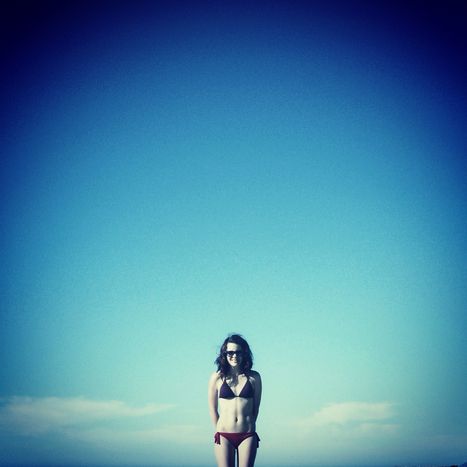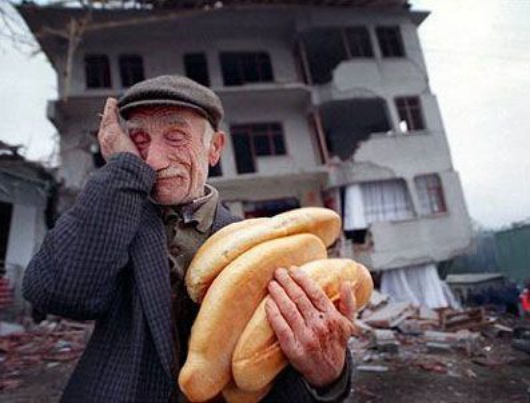
Are misery images banned on greek media?
Published on
by Elina Makri A recent recommendation from the Greek National Broadcast Authority spreads controversy over crisis - misery images broadcasted by greek media.
The last four years, the debt-crippled state has gained a lot of international attention due to the painful austerity measures; political instability, the violent riots from extremist groups, uncontrolled illegal immigration and the rise of Golden Dawn, a nationalist political party that reminds Europeans old nightmares of its bloody history.
Greek media suddenly got more attention; many local journalists have seen their work being recognized internationally and photos with faces from the athenian streets achieve what only U.S. Presidents, Barak Obama and George W. Bush have done in the past; make the cover in the same week of the biggest global newsweekly magazines like the Economist.
That being the press, Greeks themselves, feel puzzled and remain suspicious over the role of local and foreign media telling their story as the national drama unfolds. For the greek audience, it feels like "pro memorandum" and "anti-austerity" news outlets are all they have to choose from to get their daily news.
Do the images broadcasted on greek tv are telling the broader story or even an honest story? On January, Greece’s National Radio and Television Council (ESR) suggested to television stations to refrain from displaying images of homeless and of people driven before the judicial, prosecutorial, police and other authorities, without express or implied consent from them. The recommendation* suggests that such images and camera shots could be broadcasted only after consent of the persons involved.
That last bit is the one of the key issues here.
Immediately there were reactions from Greek journalists who perceived the Recommendation as a decision of censorship. Even a Greek deputy from the Opposition party SYRIZA, Maria Dourou, has submitted a parliamentary question over the matter, stating that “it is obvious that the National Broadcast Authority attempts to manipulate information broadcasted by TV, by altering its content through this prohibition”.
Nikos Chatzinikolaou, a famous Greek anchorman and Real News owner, described the decision as “censorship” and demanded that the Authority needed to define “misery”.
So, are Greek journalists being asked to stop showing misery?
According to Evi Demiri, member of the Council, the confusion over the recommendation is a typical case of misinformation, since media can broadcast that kind of images but after blurring the faces, so as to protect the depicted person’s dignity.
“There are multiple interests over this case”, Demiri continues. “Many journalists, who are in the same time media owners, believe that by attacking the Council, they will achieve to avoid paying fines imposed by the Council. We act in accordance with the law and law has specific provisions to protect human face, unless specified otherwise only by the Public Prosecutor and that, only for criminals, in the concern to protect, again, the public interest. Whatever those journalists want to achieve is a canny method, with evil scopes. This is the reason why they compare us with Iranian religious leader Khomeini. They call us priesthood, censors, even though they know well it is not about censorship. We believe they do not act responsibly.”
The controversial recommendation comes in an already tense media environment, severely hit by the crisis. Since the start of the financial turmoil in 2009, many publications have found themselves on the ropes and several media outlets have shuttered.
So, is everything allowed?
Domestic controversy over images broadcasted by local media stands for a while. On April 2012, several greek media were severely criticized, this time by the citizens, for publishing photographs* of eleven prostitutes, several of whom were foreigners and were infected with the HIV virus, in a bid to move prostitutes’ clients to be tested for HIV and as a warning to future customers.
 The obsessive focus on “Greece in misery”, is also portrayed on a photo published last February from the French Agency AFP and shows people who reach out for a bag of oranges during a free distribution of fruit and vegetables by Greek farmers outside the Agriculture Ministry in Athens, part of a farmers’ protest against high production costs. Athenian citizen Maria Koraki, 31, said AFP* photo, alters real situation of the country, passes wrong messages and destroys people's dignity. “Things are tough here but this photo is not representative of Greece. On the same spirit, there are several other photos which circulate, especially one from an earthquake in Turkey on 1999 and presented as "impact of the Greek crisis to people".
The obsessive focus on “Greece in misery”, is also portrayed on a photo published last February from the French Agency AFP and shows people who reach out for a bag of oranges during a free distribution of fruit and vegetables by Greek farmers outside the Agriculture Ministry in Athens, part of a farmers’ protest against high production costs. Athenian citizen Maria Koraki, 31, said AFP* photo, alters real situation of the country, passes wrong messages and destroys people's dignity. “Things are tough here but this photo is not representative of Greece. On the same spirit, there are several other photos which circulate, especially one from an earthquake in Turkey on 1999 and presented as "impact of the Greek crisis to people".
 Does the doctrine of the triptych “blood, sperm, crown” hold true? Surely, this is the tera cognita for media. Yet, Simon Kuper, on his article published on Financial Times, while referring to the perception we, Europeans have for Europe, writes that “life here is better than you’d ever know from watching TV news” .
Does the doctrine of the triptych “blood, sperm, crown” hold true? Surely, this is the tera cognita for media. Yet, Simon Kuper, on his article published on Financial Times, while referring to the perception we, Europeans have for Europe, writes that “life here is better than you’d ever know from watching TV news” .
In the meantime, under those conditions, the Prefecture of Crete, southern Greece, urges people with its new video to just “come and see for yourself”:
Recommendation 1/22.1.2013 http://www.express.gr/news/ellada/596106oz_20120501596106.php3 AFP PHOTO/ LOUISA GOULIAMAKI



